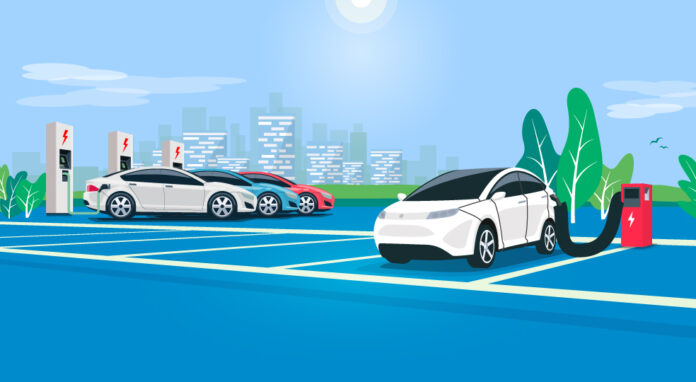When a rocket is sent into space, there is a great paradox: about 90% of the rocket's weight. It is the fuel you need to get away from Earth. As the rocket accelerates, three things happen: the speed increases, the rocket moves further from the Earth (and the planet's gravitational pull), and as the fuel burns, the rocket weighs less and therefore Therefore, it can accelerate faster.
We face a similar problem in the world of electric vehicles, with one obvious exception. Technically car batteries get heavier as they charge, but the difference is so small that it couldn't be measured even with the most accurate car scale. That doesn't matter, though, because when you add more batteries to a car, you should always carry all of those batteries. That's a problem that's growing as cars get bigger and heavier.
A 1984 Volkswagen Rabbit only had 90 horsepower, but The average fuel consumption was 34 miles per gallon. The 2009 version of that car had almost twice the power and all kinds of technological advantages, but its average fuel consumption is a measly 24.6 miles per gallon. Sure, the engines became more efficient and they also have new comfort features. It is also safer, but weighs about 450 kilograms more.
Weight, more than almost anything else, affects a vehicle's fuel economy.
It turns out that the batteries are quite heavy. The battery of a Tesla Model 3 weighs more than 450 kg. The Rivian truck battery weighs 800 kg. And if you opt for an EV Hummer, the battery weighs more than a 2009 Volkswagen Rabbit at 1300 kg.
There is a better way. American drivers aren't going to like it, and GM killing off the Bolt line is a big leap in the wrong direction.
If you have driven in various places around the world, it is notable that cars from other countries are quite different. They are mostly smaller and also have comparatively more delicate motors. This is because in countries where public transportation is easily accessible, cars become a luxury. Big, fast cars are even taxed as luxury items. And gas prices are absolutely crazy compared to what they're used to in the U.S. So people who need cars generally opt for smaller vehicles that are cheaper to begin with and use less gas.
BMW's early attempts at building an electric car suited this approach very well. The looks of the BMW i-3 may be an acquired taste, but the car made a lot of smart technological decisions to keep its weight down, even going so far as to use a carbon fiber monocoque chassis. When empty, the car weighs 1.200 kg and has a range of 250 km. The light weight combined with 170 electric ponies meant it wasn't very fast, but it was fast enough.
The Honda E uses a similar approach. Although it is much heavier than the BMW i-3, it is small and weighs 1.600 kg and offers a range of approximately 220 km. Fiat is flirting with small electric vehicles – the Topolino for example – but is going even further in the other direction.
Converting a car to electric does not make it environmentally friendly. Driving a Hummer EV is crazy: it has about the same range as the Tesla Model 3, but instead it has a 212 kWh battery. That means it takes 2,5 times longer to charge and uses 2,5 times more electricity to travel the same distance. Electricity may make you feel soft and fuzzy because there's no CO2 coming out of the tailpipe, but that electricity has to come from somewhere.
Only the 20% of the electricity consumed in the United States comes from renewable energy sources, 11% comes from coal plants and most of the rest comes from oil. That's pathetic, but it's a difficult problem to solve, especially as demand for electricity increases. You could argue that your electric car is getting cleaner as electrification leans more toward clean, renewable energy sources, but that's not a good argument if you're replacing your gas-guzzling SUV with an EV Hummer.
Automotive efficiency is important, regardless of where the fuel comes from. For too many years, the United States, as a primary market producing global trends, has relied on cars, trucks, and SUVs that are simply too big for their use cases. If you have to drive, smaller, more efficient cars are the future of daily driving. For occasional transportation, it is possible to rent a truck or van. This all comes down to choices and behavioral changes.
It's a shame GM is retiring the Bolt and Bolt EUV cars. Priced under $25,000, the Bolts were some of the best-selling, reasonably sized and somewhat affordable electric cars in the U.S. We're moving in the wrong direction: Bigger and more expensive means EV ownership It is becoming less accessible.




